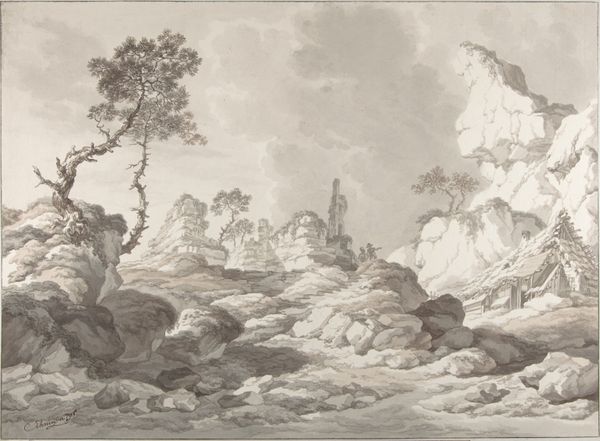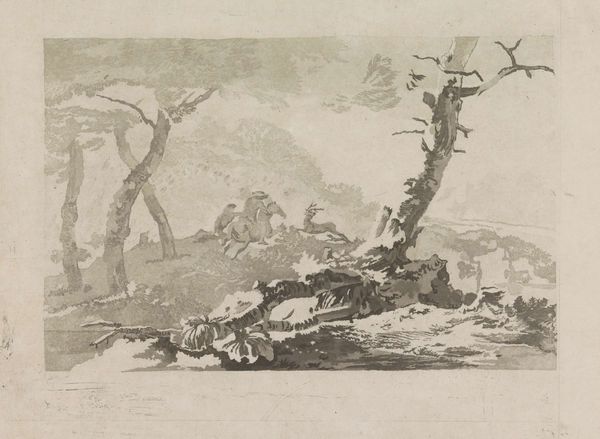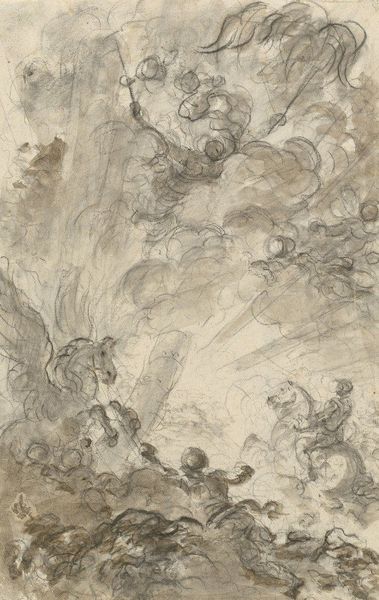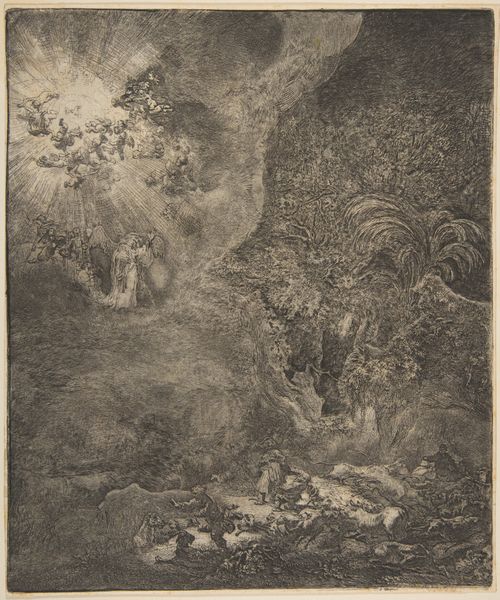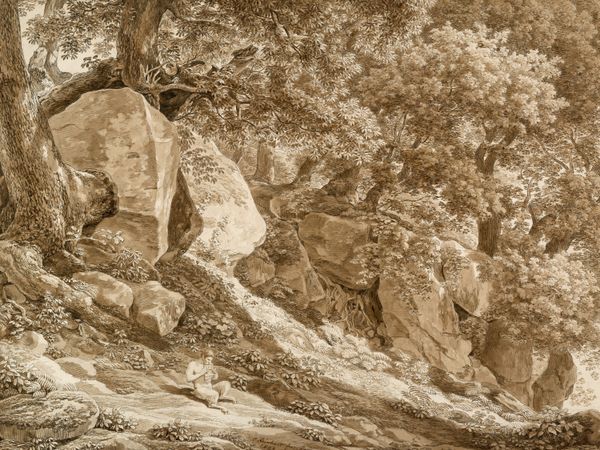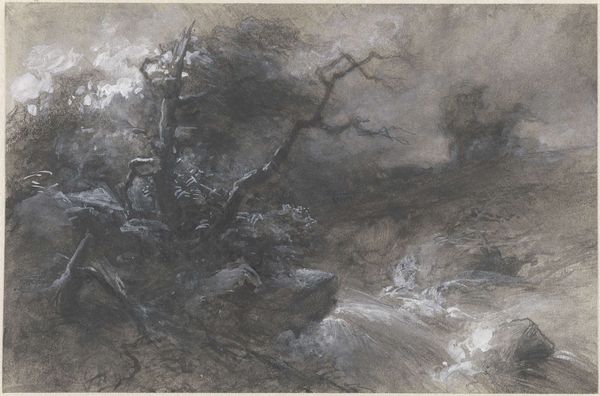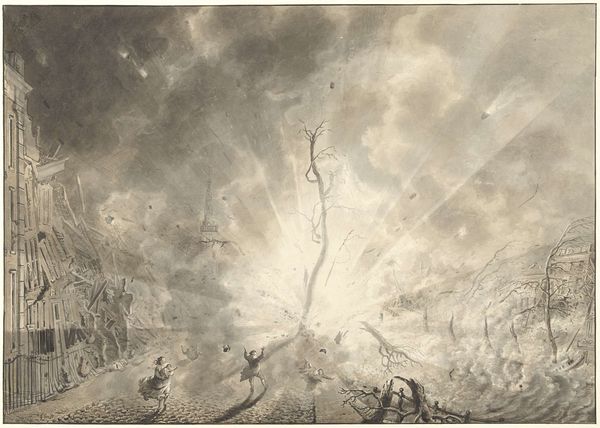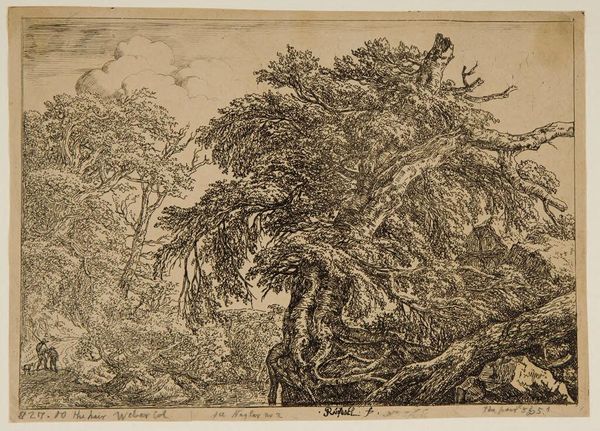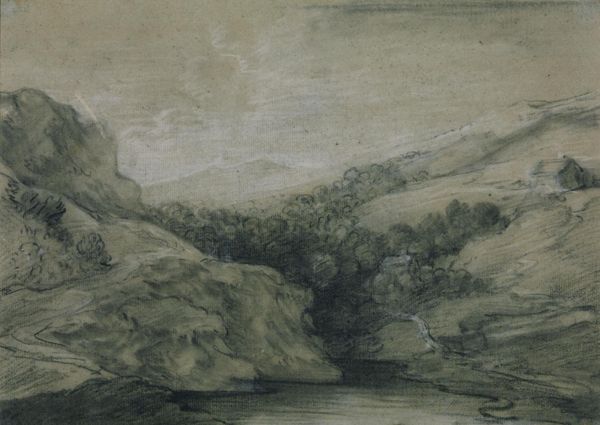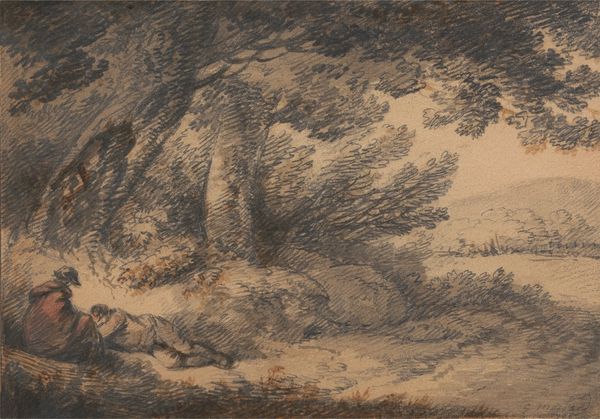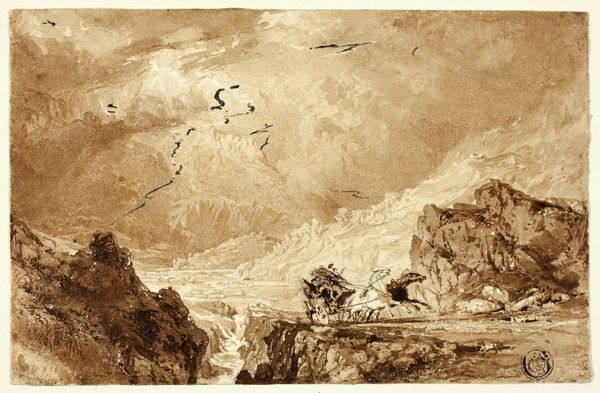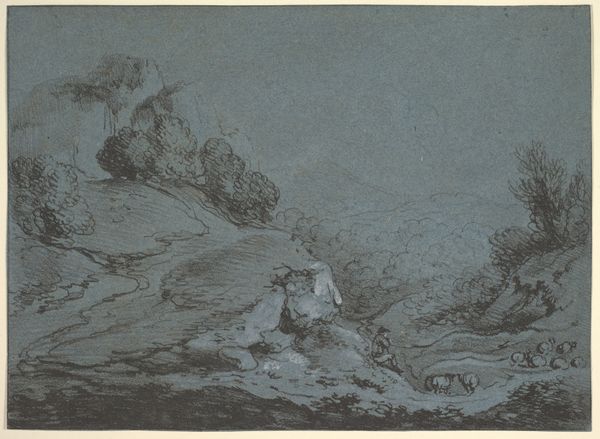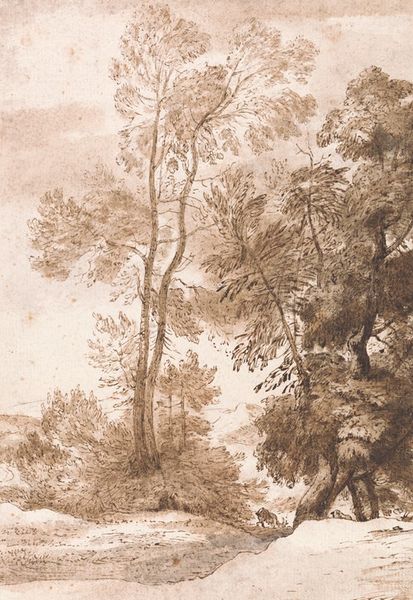
drawing, tempera, paper, pencil, graphite, charcoal
#
tree
#
drawing
#
sky
#
tempera
#
pencil sketch
#
landscape
#
charcoal drawing
#
paper
#
charcoal art
#
forest
#
column
#
romanticism
#
pencil
#
graphite
#
cityscape
#
charcoal
#
charcoal
#
nature
#
watercolor
Copyright: Public domain
Editor: We’re looking at Karl Bodmer's "Ruined Towers Overlooking the Rhine," a pencil, graphite, and charcoal drawing from 1835. The immediate impression I get is of romantic decay, a somber mood evoked by the ruined architecture amidst a dramatic landscape. What do you see in this piece? Curator: I see more than just romantic decay; I see a visual commentary on power, history, and the natural world's reclaiming of human endeavors. Bodmer presents a Rhine landscape marked by the vestiges of past empires. These ruins, rendered in monochrome, invite us to reflect on the narratives of dominance, conflict, and eventual decline that have shaped the region. The drawing embodies the Romantic era's fascination with ruins, doesn't it? Editor: Definitely! But what does the setting of the Rhine contribute to this interpretation? Curator: The Rhine was a potent symbol of German identity and history. The ruins along its banks served as constant reminders of past conflicts and shifting borders. In the context of 19th-century nationalism, Bodmer's work could be read as an inquiry into the making and unmaking of nations, highlighting the ephemeral nature of human power set against the enduring power of nature. How does the absence of color impact your reading? Editor: It adds to the sense of distance, both temporal and emotional, almost like looking at an old photograph. I also feel that this piece speaks to the idea of humanity's smallness compared to nature's vastness and persistence. Curator: Precisely. The use of pencil, graphite, and charcoal lends itself well to creating this sense of vastness but also intimacy, drawing the viewer into the quiet contemplation of time, memory, and the cyclical patterns of rise and fall. It’s a subtle critique of progress and the narratives we construct around it, don't you agree? Editor: I do. It’s amazing how much a seemingly simple landscape drawing can tell us about history and our place within it.
Comments
No comments
Be the first to comment and join the conversation on the ultimate creative platform.
